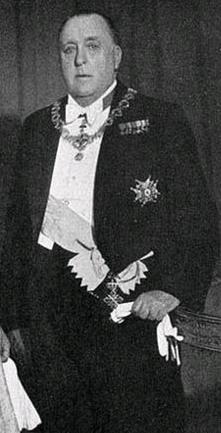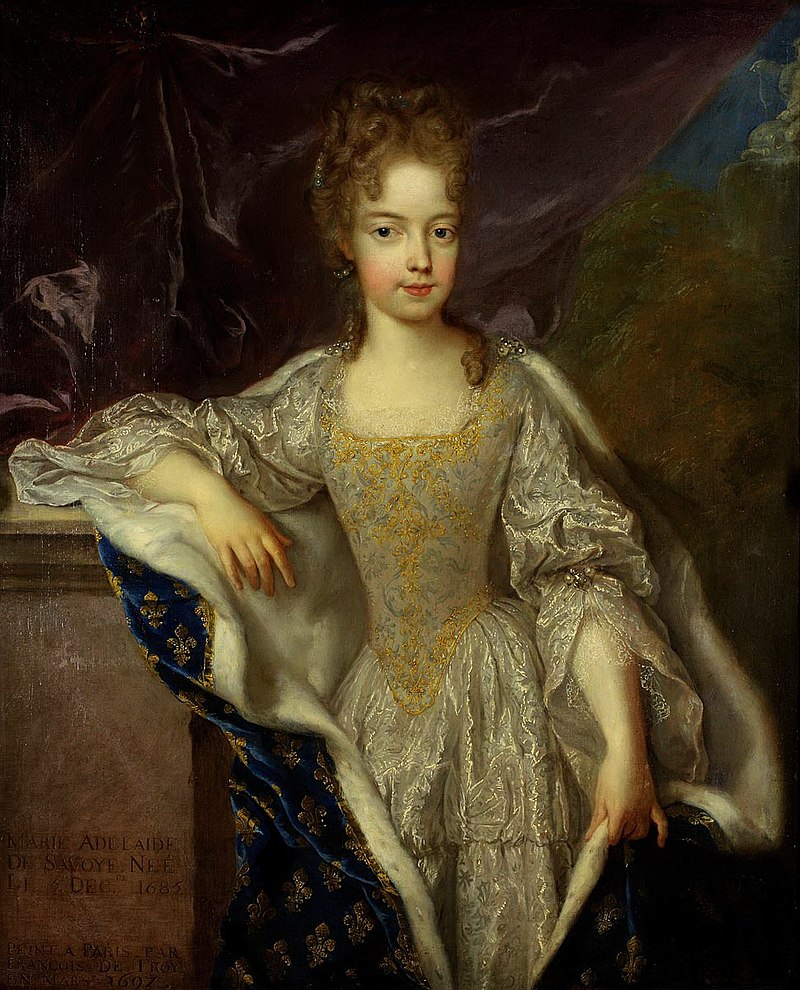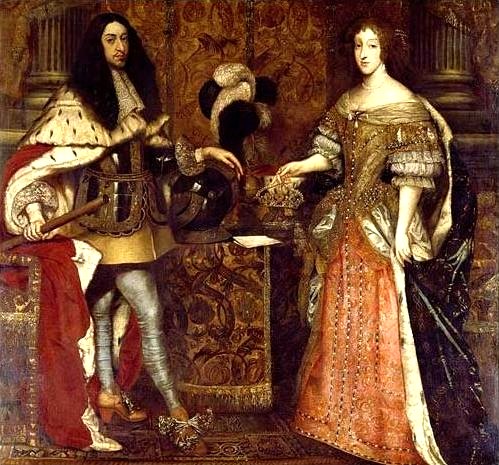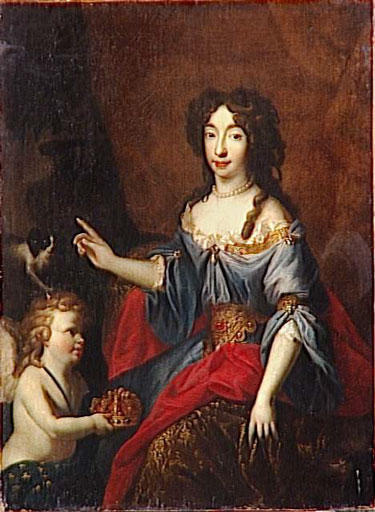by Susan Flantzer
© Unofficial Royalty 2023

Holy Roman Emperor Matthias; Credit – Wikipedia
The Holy Roman Empire was a limited elective monarchy composed of hundreds of kingdoms, principalities, duchies, counties, prince-bishoprics, and Free Imperial Cities in central Europe. The Holy Roman Empire was not really holy since, after Holy Roman Emperor Charles V in 1530, no emperors were crowned by the pope or a bishop. It was not Roman but rather German because it was mainly in the regions of present-day Germany and Austria. It was an empire in name only – the territories it covered were mostly independent each with its own rulers. The Holy Roman Emperor directly ruled over only his family territories, and could not issue decrees and rule autonomously over the Holy Roman Empire. A Holy Roman Emperor was only as strong as his army and alliances, including marriage alliances, made him, and his power was severely restricted by the many sovereigns of the constituent monarchies of the Holy Roman Empire. From the 13th century, prince-electors, or electors for short, elected the Holy Roman Emperor from among the sovereigns of the constituent states.
Frequently but not always, it was common practice to elect the deceased Holy Roman Emperor’s heir. The Holy Roman Empire was an elective monarchy. No person had a legal right to the succession simply because he was related to the current Holy Roman Emperor. However, the Holy Roman Emperor could and often did, while still alive, have a relative (usually a son) elected to succeed him after his death. This elected heir apparent used the title King of the Romans.
********************
Matthias and his wife Anna of Tyrol are the founders of the Capuchin Church (German: Kapuzinerkirche) in Vienna, Austria, where the Imperial Crypt (German: Kaisergruft), the traditional burial site of the Habsburgs, is located. Matthias, Holy Roman Emperor (reigned 1612 – 1619) was also King of Bohemia (reigned 1611 – 1617), Archduke of Austria (reigned 1608 – 1619), Archduke of Further Austria, (1608 – 1619), King of Hungary and Croatia (reigned 1608 – 1618). Born on February 24, 1557, in Vienna, Archduchy of Austria, Matthias was the seventh of the sixteen children and the fourth but the third surviving son of Maximilian II, Holy Roman Emperor, King of Bohemia, King of Hungary and Croatia, Archduke of Austria and his first cousin Maria, Infanta of Spain, Archduchess of Austria. Rudolf’s paternal grandparents were Ferdinand I, Holy Roman Emperor and Anna of Bohemia and Hungary. His maternal grandparents were Charles V, Holy Roman Emperor (also Carlos I, King of Spain; Karl I, Archduke of Austria; Charles II, Lord of the Netherlands, Duke of Burgundy, among many other titles) and Isabella of Portugal.

Matthias’ parents with his three eldest surviving siblings Anna, Rudolf, and Ernst; Credit – Wikipedia
Matthias had fourteen siblings:
- Archduchess Anna of Austria, Queen of Spain (1549 – 1580), married her maternal uncle King Felipe II of Spain (his fourth wife), had five children but only one survived childhood
- Archduke Ferdinand of Austria (1551 – 1552), died in infancy
- Rudolf II, Holy Roman Emperor (1552 – 1612), unmarried
- Archduke Ernst of Austria, Governor of the Low Countries (1553 – 1595), unmarried
- Archduchess Elisabeth of Austria, Queen of France (1554 – 1592), married King Charles IX of France, had one daughter who did not survive childhood
- Archduchess Marie of Austria (1555 – 1556), died in infancy
- Archduke Maximilian of Austria (1558 – 1618), unmarried
- Albrecht VII, Archduke of Austria, Governor of the Low Countries (1559 – 1621), married his first cousin Isabella Clara Eugenia of Spain, no surviving children
- Archduke Wenceslaus of Austria (1561 – 1578), unmarried, died in his teens
- Archduke Friedrich of Austria (1562 – 1563), died in infancy
- Archduchess Marie of Austria (born and died 1564), died a month after her birth
- Archduke Charles of Austria (1565 – 1566), died in infancy
- Archduchess Margaret of Austria (1567 – 1633), refused to marry her uncle King Felipe II of Spain whose fourth wife (Margaret’s eldest sister Anna) had died, became a nun under the name of Sister Margaret of the Cross at the Monastery of Santa Clara de las Descalzas Reales in Madrid, Spain
- Archduchess Eleanor of Austria (1568 – 1580), died in childhood

Matthias, age 22, as Archduke in armor holding a general’s staff; Credit – Wikipedia
Very little is known about Matthias’ childhood. One of his teachers was Ogier Ghislain de Busbecq, a Flemish writer, herbalist, and diplomat in the employ of three generations of Holy Roman Emperors. In 1572, Matthias’ father Maximilian II passed the crown of Hungary to his eldest son Rudolf, and in 1575, Rudolf was also granted the crown of Bohemia and the Habsburg hereditary territories. Rudolf was elected King of the Romans in 1575, ensuring that he would succeed his father as Holy Roman Emperor. Maximilian II, Holy Roman Emperor died, aged forty-nine, in the Imperial City of Regensburg, now in the German state of Bavaria, on October 12, 1576. Matthias’ brother Rudolf was considered an ineffective ruler. Rudolf’s conflict with the Islamic Ottoman Empire was his undoing. He was unwilling to compromise with the Ottomans and was determined to unify all of Christendom with a new crusade, so he started a long and indecisive war against the Ottomans, the Long Turkish War (1593 – 1606).
Rudolf’s Hungarian subjects were tired of the Long Turkish War and revolted in 1604. In 1605, Habsburg family members forced Rudolf to give control of Hungary to his brother Archduke Matthias. By 1606, Matthias had negotiated peace with the Hungarian rebels (1606 Treaty of Vienna) and the Ottomans (1606 Peace of Zsitvatorok). However, Rudolf was angry with Matthias’s concessions and his hold on power and he prepared to start a new war against the Ottoman Empire. With support from the Hungarians, Matthias forced Rudolf to cede the crowns of Hungary, Austria, and Moravia to him. Meanwhile, the Bohemian Protestants demanded greater religious liberty, which Rudolf granted in the Letter of Majesty in 1609. However, when the Bohemian Protestants asked for further freedom, Rudolf used his army against them. The Bohemian Protestants then appealed to Matthias for help. Matthias’ army held Rudolf prisoner at his usual residence, Prague Castle in Prague, Kingdom of Bohemia, now in the Czech Republic, until 1611 when Rudolf ceded the crown of Bohemia to Matthias. Rudolf lost what was left of his power and lived in isolation at Prague Castle in Prague, Kingdom of Bohemia, now in the Czech Republic.

Anna of Tyrol, Holy Roman Empress; Credit – Wikipedia
On December 4, 1611, at the Augustinian Church in Vienna, Austria, Matthias married his first cousin Anna of Tyrol, daughter of his paternal uncle Ferdinand II, Archduke of Further Austria and his second wife and niece Anna Caterina Gonzaga. Although Matthias was 54 years old, he hoped to have children with his 26-year-old wife but their marriage was childless.

Matthias as Holy Roman Emperor; Credit – Wikipedia
When Matthias’ unmarried brother Rudolf died on January 20, 1612, nine months after he had been stripped of all effective power by his younger brother, Matthias was elected to succeed him as Holy Roman Emperor and also succeeded to all Rudolf’s hereditary titles. During Matthias’ reign, the court and the government offices moved from Prague to Vienna. Matthias had allegedly found a spring in the area of today’s magnificent Schönbrunn Palace, outside of Vienna, which became the main summer residence of the Habsburg rulers. It is said that the name of the area and the palace came from Matthias’ remark: “Look, what a beautiful spring!” (beautiful: schön, spring: Brunn[en]).
During his seven-year reign, Matthias was seriously ill with gout and preferred the distractions of court life to the boring affairs of state. Cardinal Melchior Klesl, Matthias’ chief minister and favorite determined the policies. Klesl wanted to arrange a compromise between Catholic and Protestant states within the Holy Roman Empire to strengthen the empire. These policies were opposed by the more conservative Catholic Habsburgs, especially Matthias’s brother Archduke Maximilian, who hoped to secure the succession for their ardent Catholic cousin Archduke Ferdinand, who later became Holy Roman Emperor Ferdinand II.
Concerned with their religious freedom, the Protestant Bohemians opposed all Catholic officials appointed by Matthias. This led to the 1618 Defenestration of Prague, a Bohemian Protestant revolt, and one of the three incidents in the history of Bohemia in which people were defenestrated – thrown out of a window. The 1618 Defenestration of Prague led to the Thirty Years’ War (1618 – 1648), one of the longest and most destructive conflicts in European history, with an estimated 4.5 to 8 million soldiers and civilians dying as a result of battle, famine, and disease.
Matthias was old, ill, and unable to prevent the faction of his brother Archduke Maximilian from gaining power. He died on March 20, 1619, aged 62, in Vienna, Austria. His wife Anna had died just three months before, on December 15, 1618, aged 33. Archduke Ferdinand had already been crowned King of Bohemia in 1617 and King of Hungary in 1618. He was elected Holy Roman Emperor on August 28, 1619.

Interior of the Capuchin Church; Credit – Wikipedia
Although Matthias and his wife Anna did not leave any children, they left the future Habsburgs a burial site. Matthias and Anna founded the Capuchin Church (German: Kapuzinerkirche) in Vienna, Austria, where the Imperial Crypt (German: Kaisergruft), the traditional burial site of the Habsburgs, is located. Anna had come up with the idea of a Capuchin monastery and burial place for her and her husband and wanted to build it near Hofburg Palace in Vienna. In her will, Anna left funds to provide for the church’s construction. Construction began on November 10, 1618, but sadly, Anna died a month later and Matthias died three months after Anna. Because the Imperial Crypt at the Capuchin Church had not yet been completed, Matthias and Anna were temporarily buried at the Poor Clares Convent of St. Maria, Queen of the Angels in Vienna.

Tombs of Holy Roman Emperor Matthias and Anna of Tyrol, Holy Roman Empress; Credit – Von Welleschik Eigenes Werk, CC BY-SA 3.0, https://commons.wikimedia.org/w/index.php?curid=6619836
The Capuchin Church was not completed and dedicated until 1632 because of the Thirty Years’ War. On Easter 1633, the two sarcophagi containing the remains of Matthias and Anna were transferred to the Capuchin Church and placed in what is now called the Founders Vault. Located under the Imperial Chapel, a side chapel in the main church, the Founders Crypt is the oldest part of the Imperial Crypt, dating from the original construction of the Capuchin Church. The Founders Crypt cannot be entered by visitors and is visible through a gate from the Leopold Crypt. Through the years, other vaults have been added and Capuchin friars still look after the tombs.

Capuchin Church in Vienna (Cloister on left, Church in middle, Imperial Crypt on right); Credit – © Susan Flantzer
This writer has visited the Capuchin Church. The burial place of the Habsburgs is so unlike the soaring cathedrals containing the other royal burial sites I have visited and certainly not as grandiose. The Capuchin Church is small and is on a street with traffic, shops, stores, restaurants, and cafes. One cafe is directly across from it. Walking past the church, one would never think the burial place of emperors is there.
This article is the intellectual property of Unofficial Royalty and is NOT TO BE COPIED, EDITED, OR POSTED IN ANY FORM ON ANOTHER WEBSITE under any circumstances. It is permissible to use a link that directs to Unofficial Royalty.
Works Cited
- Anna of Tyrol (2023) Wikipedia. Available at: https://en.wikipedia.org/wiki/Anna_of_Tyrol (Accessed: 12 June 2023).
- Flantzer, Susan. (2022) Capuchin Church in Vienna, Austria, Unofficial Royalty. Available at: https://www.unofficialroyalty.com/capuchin-church-in-vienna-austria/ (Accessed: 02 June 2023).
- Flantzer, Susan. (2023) Maximilian II, Holy Roman Emperor, King of Bohemia, King of Hungary and Croatia, Archduke of Austria, Unofficial Royalty. Available at: https://www.unofficialroyalty.com/maximilian-ii-holy-roman-emperor-king-of-bohemia-king-of-hungary-and-croatia-archduke-of-austria/ (Accessed: 02 June 2023).
- Flantzer, Susan. (2023) Rudolf II, Holy Roman Emperor. Available at: https://www.unofficialroyalty.com/rudolf-ii-holy-roman-emperor-king-of-bohemia-king-of-hungary-and-croatia-archduke-of-austria-margrave-of-moravia/ (Accessed: 02 June 2023).
- Matthias (HRR) (2023) Wikipedia (German). Available at: https://de.wikipedia.org/wiki/Matthias_(HRR) (Accessed: 12 June 2023).
- Matthias, Holy Roman Emperor (2023) Wikipedia. Available at: https://en.wikipedia.org/wiki/Matthias,_Holy_Roman_Emperor (Accessed: 12 June 2023).
- Wheatcroft, Andrew. (1995) The Habsburgs. London: Viking.
- Wilson, Peter H. (2016) Heart of Europe – A History of the Holy Roman Empire. Cambridge, MA: Harvard University Press.






































